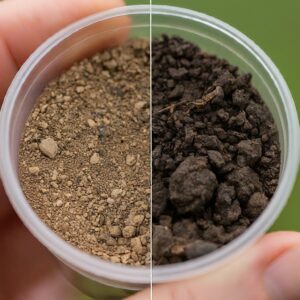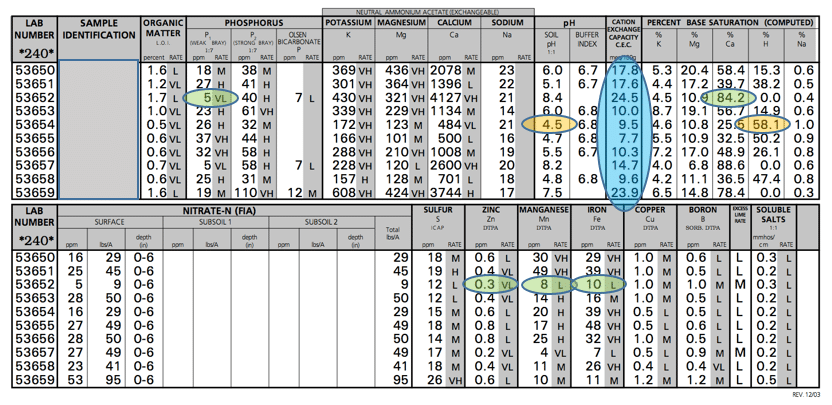
No matter if you have great seeds, the right amount of water, and the best temperatures…your crop is only going to be as good as the soil where it’s planted. You simply can’t achieve as high of quality crops with inferior raw materials.
There are a variety of strategies for managing soil that’s out of balance, and AgroLiquid has the resources to help.
Soil chemistry
To manage soil imbalances, there are some basic soil chemistry facts to consider. First, there’s the Cation Exchange Capacity (CEC), which is the soil’s ability to hold and exchange positively charged ions, known as cations. These cations, including calcium, magnesium, potassium, and sodium, are essential plant nutrients.
The texture of the soil, determined by how much sand, silt, and clay is present, influences CEC. For instance, clay soils generally have a higher CEC than sandy soils. This means clay soils can hold and exchange more nutrients, which helps with crop productivity.
Base saturation, which is written as a percentage, indicates the proportion of CEC occupied by base cations – again calcium, magnesium, potassium, and sodium. It’s important to maintain the right base saturation levels to get the best growth.
For instance, a calcium saturation range is typically 65-80%, while magnesium saturation should be around 10-20%. An imbalance in base saturation can lead to nutrient deficiencies or excesses, both of which can negatively affect crop development.
Soil measurements
Soil pH, a measure of acidity or alkalinity, affects nutrient availability. Most crops prefer a slightly acidic to neutral pH range (6.0-7.0). Extreme pH levels, whether acidic or alkaline, can lock up nutrients, making them inaccessible to crops.
Sodium and hydrogen ions can impact soil health. Excess sodium can disrupt soil structure, leading to compaction, reduced water infiltration, and poor root growth. Hydrogen ions are responsible for soil acidity, and excessive acidity can limit nutrient uptake and microbial activity.
Calcium and magnesium are two cations that affect plant health. Calcium contributes to cell wall strength and root development, while magnesium is a key component of chlorophyll. Of course, maintaining the right levels of these nutrients is good for growth.
Testing the soil
You don’t have to guess at any of this chemistry…a soil test will give you the answers you need. First, collect a soil sample following these guidelines:
- Pull soil samples in a zigzag or grid pattern through the middle of the field.
- Pull separate soil samples for areas that show crop damage, different soil types, or different water absorption patterns. Each sample should not represent an area larger than 20 acres.
- Place soil samples in a clean plastic bucket that is not used for any other purpose. Metal buckets and residue on the bucket may corrupt the sample.
- Send the soil samples to the address provided with your test bag.
- Analyze the results with AgroLiquid.
Analyzing the soil test
Consider this sample soil test:

This is just one of the many possible reactions that can limit a crop’s ability to use nutrients in the soil. Much of the phosphorus that is in the soil on the test with the high Ca will never be used by the crop, so the key is staying focused on what the crop will be able to use over what you’re applying to the soil. The calcium-phosphorus bond is too strong for the plant to be able to extract the phosphorus from the calcium. Considering how much fertilizer is used by the plant rather than how much is applied to the soil is important.
What can you do to get the best results?
Prepare – A complete soil test is an indicator of how much efficiency can be expected with applied crop nutrition.
Depend on AgroLiquid products – AgroLiquid’s unique protection improves this efficiency. For example, Nutriq is a specialized technology that ensures the availability of nutrients as well as the synergy between primary nutrients, secondary nutrients and micronutrients. This approach, combined with the use of high-quality materials, makes the best crop performance possible.
Adjust – Every year and every season is different. Adjusting your nutrient plan based on those particular circumstances will give you the best results.
Work with us – Here at AgroLiquid, we are dedicated to understanding crop nutrition, improving yields, and improving the lives of farmers and growers. From our educational outreach, to research facility, to liquid fertilizer products, we go after this goal in many ways. Our experts can also answer questions you may have about our liquid fertilizer and the science that makes it work.
AgroLiquid understands the nutrient relationships in the soil and can help you get – and stay – in balance. For more resources, check out our Back 2 Basics, blog, and research. Ready to get started? Please contact us anytime.

